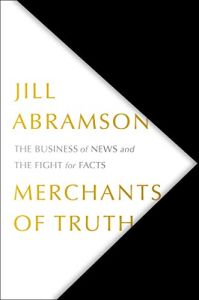Зарегистрируйтесь на getAbstract, чтобы получить доступ к этому краткому изложению.

Зарегистрируйтесь на getAbstract, чтобы получить доступ к этому краткому изложению.
Jill Abramson
Merchants of Truth
The Business of News and the Fight for Facts
Simon & Schuster, 2019
Что внутри?
A former New York Times editor chronicles how four news organizations adapted to the growth of the web.
Recommendation
As the 21st century opened, newspapers found their environment had changed, and the traits that had allowed them to thrive were now liabilities. The internet, social media and the smartphone changed how people consume news. Former New York Times executive editor Jill Abramson traces how the Times, The Washington Post, BuzzFeed and Vice navigated disruption. Her writing is clear, engaging and packed with detail. Facing accusations of plagiarism, she clarified that missing attributions were mistakes. No one questions the value of her insider's perspective or the accuracy of her information, which has great value for media consumers.
Summary
About the Author
Senior lecturer at Harvard University and Guardian columnist Jill Abramson was executive editor of The New York Times and also worked at The Washington Post and The Wall Street Journal.

















Comment on this summary